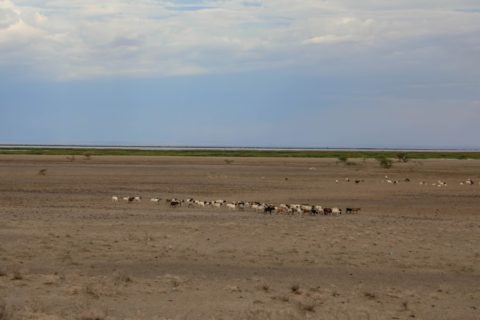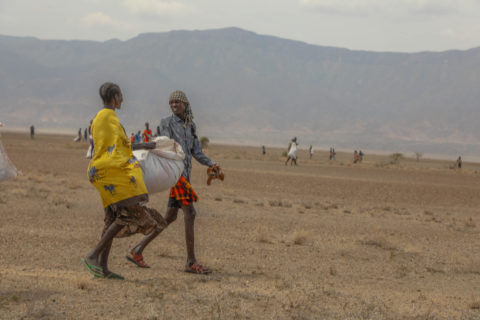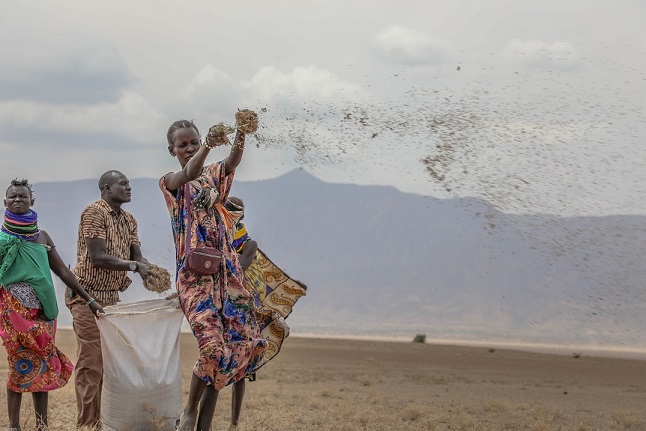Over 80 per cent of Kenya’s landmass is covered by rangelands – also known as drylands that comprise shrubs and grasslands – which are mainly located in the northern frontier. These arid and semi arid lands (ASALs) are the lifeline for pastoral communities who rear livestock as their main source of food and income. Due to erratic and inadequate rainfall and recurring and prolonged droughts, pasture and water shortages are common, impacting livestock productivity. Often, conflict between communities for limited resources is inevitable, worsening the living conditions for these marginalised pastoral peoples who are further dispossessed from access to water, land and grazing resources for their stock.

Safeguarding rangeland resources is key for both communities and their livelihoods
Turkana is prone to perennial droughts. Rains have failed in the last five successive seasons, leading to untold human suffering and massive loss of livestock, the community’s economic mainstay. Rangelands in Todonyang, located in Turkana north bordering Ethiopia, and those in Kapua have been severely degraded by frequent and severe drought and unplanned grazing. Consequently, the local community faces dire challenges such as limited livestock pasture, poor livestock production, environmental degradation and limited access to water among others. In addition, complex transboundary conflict between the Turkana and Dassanech communities (also known as Merille) of Ethiopia over the use and access to pasture and water have become rife, compounding the tough living conditions.

Dialogue between the community and other key stakeholders is necessary to share knowledge and build consensus
Consensus Building
To address these challenges, Wetlands International in collaboration with Turkana Pastoralist Development Organisation (TUPADO), Turkana County Government (Department of Livestock Production & Land Reclamation) and the local community, joined hands last November to promote regeneration and improved management of the rangelands, sustainable livelihoods and ecosystem functioning. A participatory rangeland management approach by Robinson and Ng’ang’a (2020) which includes establishing and governing the rangeland unit; managing the rangeland unit using a landscape approach; and strengthening relations with government and customary institutions was adopted.
To this end, a local leaders’ dialogue meeting was held beforehand to create awareness, educate and inform local administrators on the need to improve the rangelands for pasture, ecosystem management and sustainable resilient livelihoods.
Following the successful consensus building dialogues, Wetlands International supported the pilot restoration of 600 hectares of the Parar and Kapua rangelands with Cenchrus ciliaris seeds, commonly known as foxtail buffalo grass. Villages around Kapua in Turkana Central and seven villages in Turkana North namely Liwan, Meyan, Sasame, Kokuro, Karebur, Lowareng’ak and Todonyang were actively engaged and involved in addition to the Turkana County Government.

Reseeding these vast rangelands aligns with the Source to Sea Initiative’s goal of restoration in ASALs by preserving pasture, regenerating it and developing grazing plans for the benefit of the people and the environment. These rangelands will be managed by the Community Based Natural Resources Management Committee which will map the resources in the rangeland, develop grazing and monitoring plans, and engage the pastoral communities on the importance of good rangeland management.
Plans are afoot to reseed more areas in 2023 when the long rains season hopefully sets in.
Lead and last images: Community members broadcasting foxtail buffalo grass seeds in Todonyang rangelands

Leave a comment